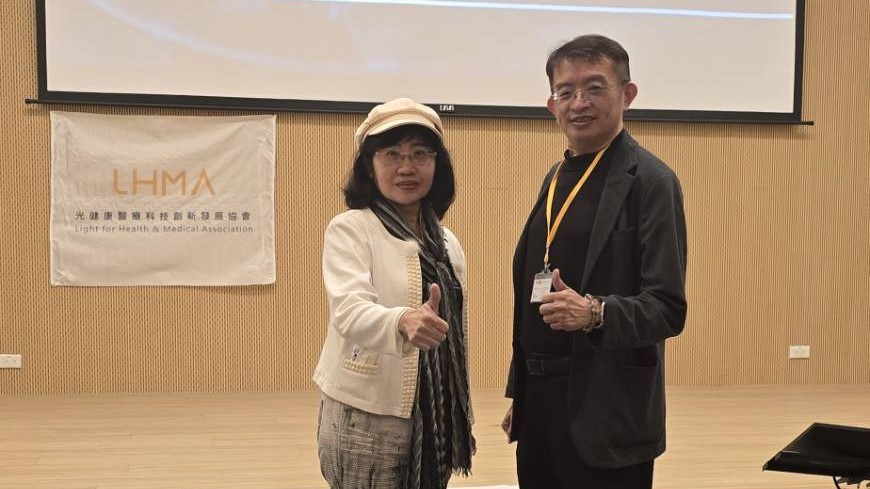
Taiwan Nano & Micro-Photonics Chairman Rone Chiu (right) and tech the artist Ching-Fei Chiu (left) attend the "Winter Symposium on Optoelectronics in Medicine." Picture/N&M offered
Taiwan Nano & Micro-Photonics Chairman Rone Chiu was recently invited to the "2024 Winter Symposium on Optoelectronics in Medicine," where he engaged with experts from academia, the medical field, and industry to discuss how silicon photonics sensing technology drives innovation in photonic health applications. Dr. Yen-Sheng Shen, President of the Photonic Health and Medical Association and Dean of the National Cheng Kung University Medical School, emphasized during the symposium that "biomedical technology has become a critical industry of the 21st century!"
In recent years, the applications of optoelectronic technology in healthcare have expanded rapidly. The concept of "Big Health Optoelectronics" encompasses various light sources, including UV and IR wavelengths, lasers, imaging, sensing, phototherapy, and telemedicine. At the symposium, several specialists presented their research and applications. Professor Chen-Sheng Yeh from NCKU's Department of Chemistry discussed his team's groundbreaking work on nanofluorescent particles and anticancer technologies using bacterial membranes. Dr. Lun-De Liao, Deputy Director of the National Health Research Institutes' Nanoengineering and Biomedical Research Center, highlighted advancements in tumor margin assessment, blood circulation monitoring, and neural imaging techniques. Dr. Jia-Hsun Hsieh, an oncologist at Linkou Chang Gung Memorial Hospital, shared insights into improving tumor identification and treatment using optical imaging, phototherapy, and photosensitizers.
The extension of optoelectronic technologies into healthcare represents a highly innovative discipline, particularly in continuous physiological monitoring and pathological imaging. These applications rely on various light wavelengths, such as X-rays, UV, visible light, IR, and terahertz waves. Among these, IR light plays a pivotal role in vital sign detection, health analysis, and early disease diagnosis, including monitoring heart rate, blood pressure, oxygen levels, body temperature, gas emissions, and even glucose concentration.
Taiwan Nano & Micro-Photonics’ silicon photonics sensing technology is based on leveraging silicon materials to emit IR light, offering advantages such as high sensitivity, low power consumption, and modular design. This enables multifunctional physiological gas sensing and custom wavelengths in the mid-IR or long-IR range for non-invasive diagnostics, providing groundbreaking solutions for personalized medicine.
The integration of Big Health Optoelectronics is revolutionizing healthcare and wellness management, driving applications from preventive medicine to personalized health solutions while creating greater value for public health. As a pioneer in the photonic health domain, Taiwan Nano & Micro-Photonics focuses on advancing silicon photonics sensing technology. Its strengths in high sensitivity, low power consumption, and modularity facilitate multifunctional physiological monitoring and non-invasive diagnostics. Collaborative efforts between academia and industry are crucial to building a comprehensive ecosystem, enabling the optoelectronics sector to illuminate every spectrum and achieve its full potential.